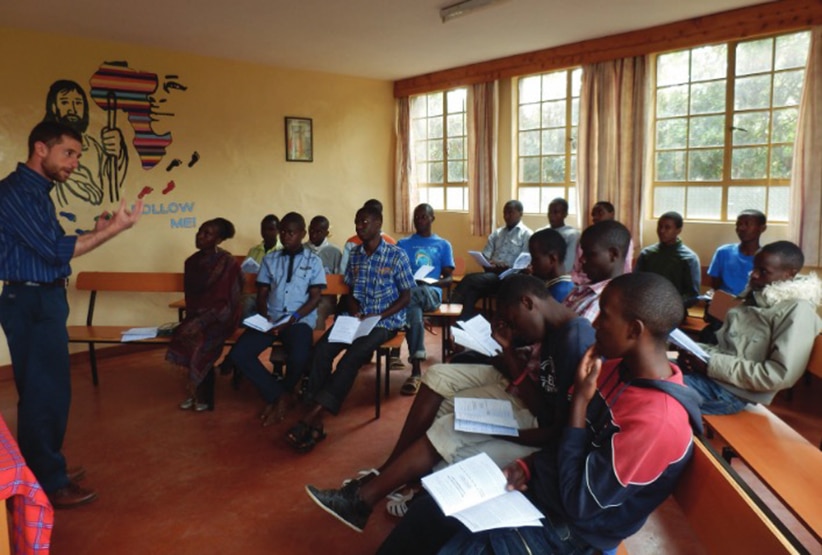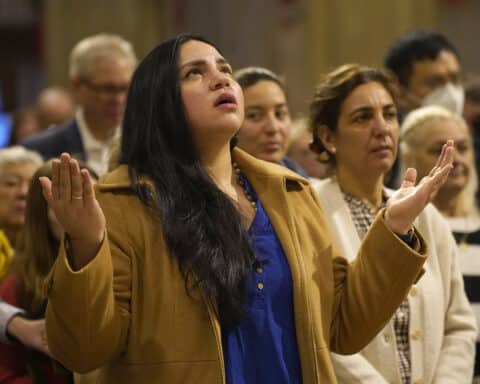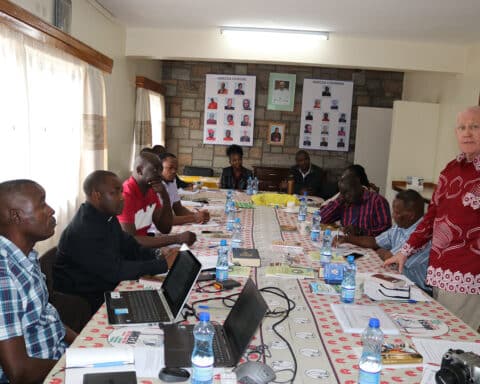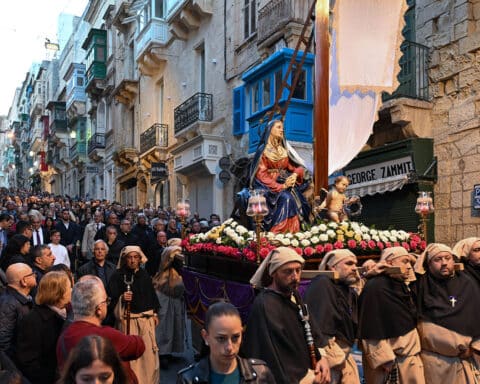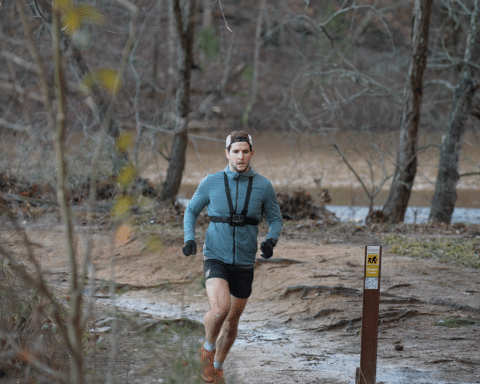On a rock in the middle of the Mediterranean, a young boy proclaims, “I love to learn about Jesus!” Where did such faith come from? Down through the centuries, it came directly from St. Paul the Apostle.
The island of Malta rises out of the sea in a position virtually equidistant from mainland Europe to the north, the upper regions of Africa to the south and halfway between the shores of the westernmost ports of the Middle East and the gateway to the Atlantic. It is a small, rocky place hidden in the middle of everything. St. Paul found it by accident, quite literally, when the ship on which he was being taken to Nero’s Rome for the trial that would lead to his martyrdom smashed into one of the outlying rocks just off the coast of Malta, hurling everyone into the sea (cf. Acts 27-28). Paul made it ashore, as did St. Luke and all the others. It wouldn’t be a stretch to call that a miracle, but what happened next eclipses even the unlikeliness of that rescue. For the next three months, Paul healed the sick, instructed the ignorant and proclaimed the Gospel on the island made of rock. By the time he left, the seed of the Christian faith had taken root.
Twenty centuries later, this young boy is surrounded by his peers as, together, they are formed in the Catholic faith. St. Paul is long gone, but the gift he gave to the island of Malta has been passed down from generation to generation. And since the early 20th century, the primary custodian of that gift has been the Society of Christian Doctrine — a lay community that runs catechetical centers attached to just about every parish on Malta, as well as on its sister island of Gozo, and across the globe in such places as Australia, England, Poland, Albania, Peru, Cuba, the Sudan and Kenya.
Second Apostle of Malta
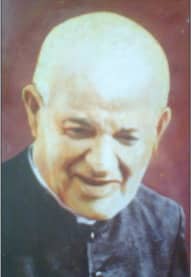
Wikimedia Commons
What the Society of Christian Doctrine has created is something of which St. Paul himself would be proud. In fact, the entire Church should take notice. The society was founded not by St. Paul the Apostle but rather by the man Pope St. John Paul II dubbed the “Second Apostle of Malta” — the island’s first native born saint: Father George Preca. While still studying in the seminary in Malta, Father Preca befriended a group of young men in his parish who regularly would get together to play soccer. He learned what interested them, and he spoke to them about things they cared about. At the same time, Father Preca was observing how the young people of Malta were raised in a generally Catholic culture where the Faith was assumed but not well-understood. On the basis of his friendships with these young men, their trust in him and his desire to energize young people to become not just recipients but, indeed, teachers of the Faith, Father Preca founded the first center for what would become the Society of Christian Doctrine on March 7, 1907.
A lay movement had begun. The society would ripen into a community of dedicated, celibate, spiritually mature laymen who devoted their lives on a day-to-day basis to instructing young people in the Catholic faith. Actually, two communities developed: one for men and one for women. Four nights a week all across Malta, young people go to the society’s centers for fellowship, prayer and religious instruction, then they often come together for outings on the weekends. This is the primary way in which catechesis is conducted in Malta.
Faithful foundation
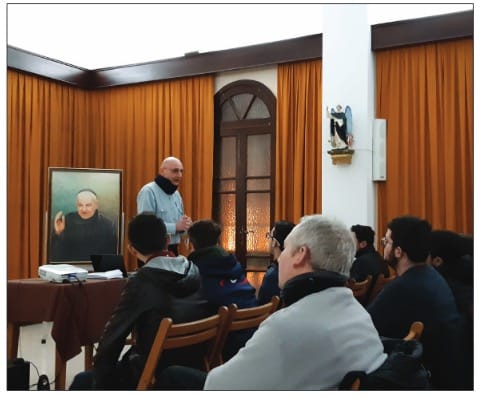
Each night, the same members — typically eight per center — go to their centers after working their secular jobs in fields like education, technology and law. The first group of young people — the youngest ones, ranging in age from 5 to 10 — show up at 5:45 p.m. Every center has a soccer field and other recreational activities, and the young people dive right in, doing just what that first group of young people were doing when St. George Preca found them outside his parish. After 20 minutes or so, a member rings a bell, the young people gather for communal prayer, and then they proceed to separate rooms according to age. For the next 30-45 minutes, the society members teach the young people the basics of the Catholic faith, instruct them in prayer and doctrine, and foster conversations appropriate to their age level. When the youngsters’ time is complete, they head back home and, 15 minutes later, another group of young people arrives — an older group of adolescents who range in age from 11 to 15. They engage in the same routines as their younger confreres.
This happens four nights a week all throughout the year, with the same young people every night. The consistent practice of being formed in the Catholic faith at these centers under the guidance of the society members is not designed to be just one more thing that young people do. Instead, it is a stable and regular foundation for their lives.
Lay evangelists
The key to the whole endeavor is the personal commitment of the members of the society themselves. Most of the now hundreds of male members and hundreds more female members spent their own youths in the society’s centers. Typically in their late teenage years, they begin to seriously discern the call to the society under the guidance of older members. Formal formation for the society lasts four years, which includes regular study, instruction in prayer and regular service in one of the centers — often the one in which they themselves were raised. When they become regular members, their apostolic activity is focused in one of the centers, where they share both their catechetical work and their own ongoing spiritual and theological formation with members who range in age from their late 80s all the way to early 20s. Each center, therefore, features an intergenerational, mutually supportive mentoring network for the members themselves, from which the members in turn mentor the young people entrusted to their care.
Members do not take permanent vows; rather, they commit themselves to living in peace with a distinguishing charism of “meekness” that, far from weakness, comes off as the gentle and confident strength of intentionality. The members embrace celibacy both as a form of religious commitment and for quite practical purposes. Since they serve in the centers four nights a week, plus engage in a general meeting of all Maltese members on Wednesdays, their evenings are completely dedicated to their apostolate. As further testament to their zeal and dedication, after both groups of young people leave the centers each night, the center’s members stay together for another hour to engage in their own daily formation. On a rotating basis, different members lead the group in both theological and spiritual instruction, and then pray together.
Forming the young
Especially with the most recent synod, the Church has turned its attention to forming young people in the Catholic faith. The society’s way is a way from which there is much to learn. They are giving young people some of the things they most lack and most need: stability, mentoring, substantive instruction and joy. The young boy who shouted, “I love to learn about Jesus!” was answering my question about what he liked most about coming to his center. Responses like his are the norm, not the exception.
The society’s members are far more than teachers of the Faith; they are witnesses. They live a form of life that is credible, intentional and persuasive. In a time of crisis, this is what the Church and young people need most. The teaching of the Catholic faith that the society members offer is rooted in the very faith that shapes their lives — from prayer, to study, to community, to service. It is a faith the first Apostle of Malta gave as a gift, one renewed by its second apostle, and one now given freely, with joy and care, through the Society of Christian Doctrine to young people who receive as their own inheritance both the beauty of the Catholic faith and the mission to share it.
Leonard J. DeLorenzo, Ph.D., serves in the McGrath Institute for Church Life and teaches theology at the University of Notre Dame. His latest book is “What Matters Most: Empowering Young Catholics for Life’s Big Decisions” (Ave Maria Press, $16.95).

